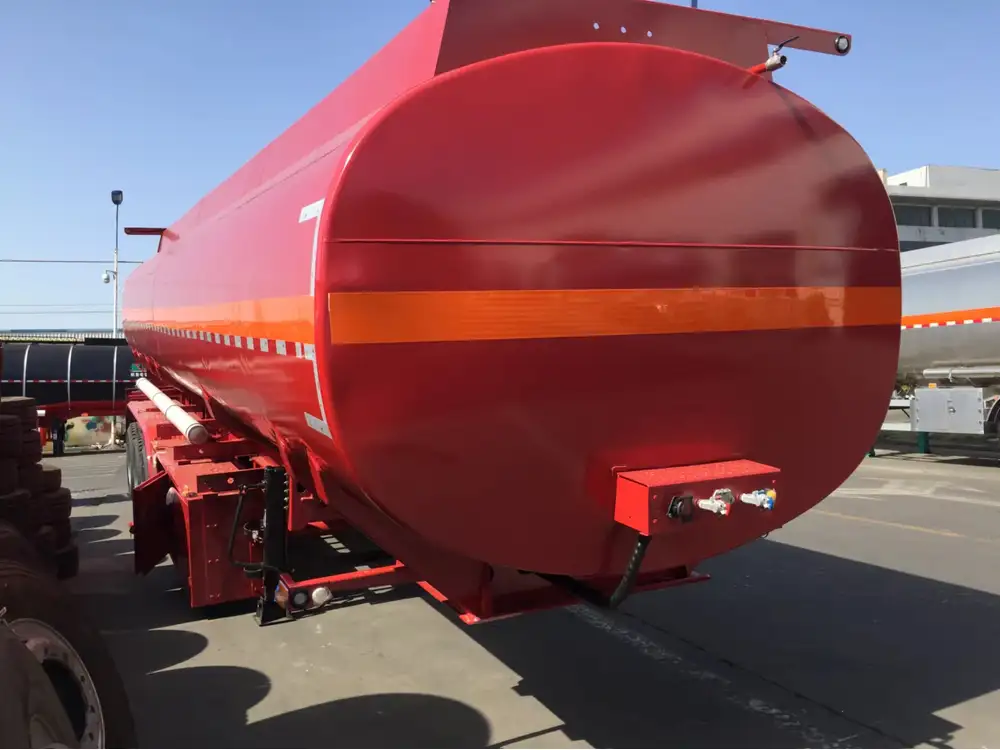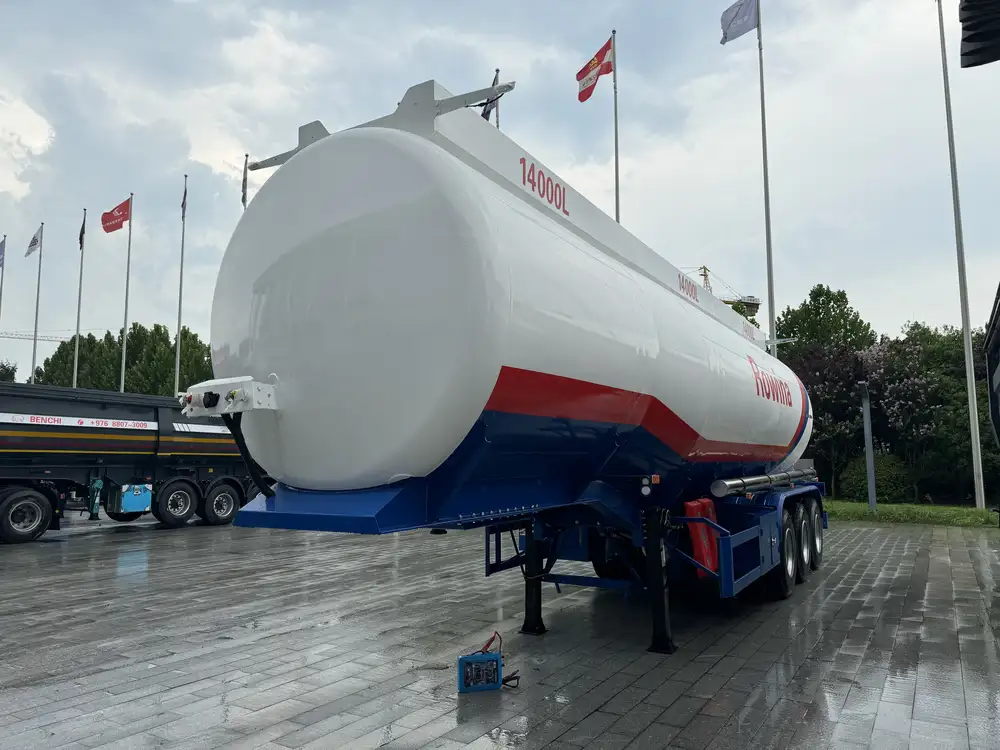In the world of transportation, specifically within the logistics and freight sector, understanding the fuel capacity of trucks is crucial. This knowledge is not merely academic; it’s paramount for planning, efficiency, and compliance. The question “how many gallons in a fuel truck?” is a common inquiry among fleet operators, logistics managers, and drivers. In this comprehensive guide, we will dissect this topic, exploring various fuel tank sizes, their implications for operations, and the factors influencing fuel consumption.
Overview of Fuel Tank Capacities
Standard Fuel Tank Sizes in Semi-Trailer Trucks
Semi-trailer trucks, also known simply as semis, come with varying fuel tank capacities, which can significantly influence their operational efficiency. Generally, the fuel tank size of a semi-trailer truck can range from 100 gallons to 300 gallons. The choice largely depends on several factors, including the type of truck, manufacturer specifications, and intended use. Understanding these capacities allows fleet managers to plan routes better, reduce fueling stops, and optimize fuel efficiency. Below is a detailed look at standard tank sizes:
| Tank Size (Gallons) | Common Applications | Average Mileage Range |
|---|---|---|
| 100-150 | Local Delivery | 7-10 MPG |
| 150-200 | Regional Hauling | 6-8 MPG |
| 200-300 | Long-Distance Hauling | 5-7 MPG |

Dual Fuel Tanks
Many modern semi-trucks are equipped with dual fuel tanks. This setup can nearly double the fuel capacity, allowing for more extended trips without the need for frequent refueling. A standard setup will include one tank of 150 gallons and another of 100 gallons, providing a total capacity of 250 gallons–an optimal configuration for long-haul logistics.
Fuel Tank Configurations
Depending on the manufacturer and the model, fuel tanks can be mounted in various locations. Some common configurations include:
- Side-mounted Tanks: Typically mounted along the truck’s frame, allowing easy access and optimal space usage.
- Underbody Tanks: Positioned underneath the truck, providing a streamlined appearance but possibly compromising some accessibility.
- Custom Configurations: Tailored to specific operational needs and preferences of the hauler.
Determining Fuel Requirements

Understanding Fuel Needs by Distance
When planning long-haul routes, understanding fuel requirements based on distance is vital. The general rule of thumb is to calculate fuel needs based on average miles per gallon (MPG) corresponding to the fuel tank size:
- Distance to Travel: Calculate the total miles for the trip.
- Average MPG: Determine the vehicle’s average fuel efficiency.
- Fuel Needed: Use the formula: [ \text{Fuel Needed (gallons)} = \frac{\text{Total Miles}}{\text{Average MPG}} ]
For instance, for a 1,200-mile trip with a truck averaging 6 MPG: [ \text{Fuel Needed} = \frac{1200}{6} = 200 \text{ gallons} ]
That means a truck with a 250-gallon tank will comfortably complete the journey with fuel to spare. This calculation aids in supply chain planning and ensures drivers are well-prepared for long durations without refueling.
Factors Affecting Fuel Consumption
Fuel consumption isn’t solely about tank size. Various external and internal factors significantly affect how much fuel a truck utilizes:
- Weight of the Load: Heavily loaded trucks consume more fuel.
- Driving Conditions: Hilly terrains, stop-and-go traffic, and adverse weather increase fuel consumption.
- Driving Behavior: Aggressive acceleration and braking can lead to higher fuel usage.
- Vehicle Maintenance: Regular oil changes, tire alignments, and general maintenance ensure optimal performance and fuel efficiency.
Fuel Efficiency Improvements
Implementing best practices can extend the distance that can be covered on a single tank of fuel. Here are a few strategies:
- Route Optimization: Utilize software solutions to find the most fuel-efficient paths.
- Adopting Eco-Driving Techniques: Train drivers to adopt smoother acceleration and braking techniques.
- Regular Maintenance: Stick to a maintenance schedule to ensure trucks run efficiently.

Comparing Different Fuel Types and Their Impact
Diesel vs. Alternative Fuels
While most semi-trailer trucks run on diesel, alternative fuels are gaining traction in the industry. The fuel type affects not just the cost but also how many gallons are needed for specific distances. Here’s a brief comparison:
| Fuel Type | Cost Per Gallon | Average MPG | Environmental Impact |
|---|---|---|---|
| Diesel | $3.50 | 6-8 | Medium |
| Compressed Natural Gas (CNG) | $2.50 | 5-6 | Low |
| Renewable Diesel | $3.80 | 6-8 | Very Low |
Given that diesel offers a better mileage but may come with higher emissions, evaluating total cost versus environmental impact is essential for fleet management decisions.
Long-Term Trends in Fuel Consumption
The freight industry is undergoing shifts in fuel consumption patterns due to advances in technology and a global push towards sustainability. Electric semi-trucks, though still emerging, promise a future where fuel capacity could be entirely redefined. As we move into an era with stricter emissions regulations, tracking developments in electric and hydrogen-fueled vehicles will be essential for your fleet strategies.

Conclusion: Navigating the Landscape of Fuel Capacity in Semi-Trailers
Estimating fuel needs accurately and understanding how many gallons a fuel truck can hold is foundational for efficient operation in the trucking industry. With knowledge of standard fuel tank sizes, factors affecting fuel consumption, and the emerging trends in vehicle technology, fleet managers and logistics personnel can make informed decisions that contribute to operational efficiency and sustainability.
Always remember, understanding your vehicle’s fuel capacity and consumption not only aids in logistics planning but also helps in managing expenses and enhancing the overall productivity of your fleet. As the industry evolves, the adaptability and strategic deployment of resources will determine the success of transportation operations in an increasingly competitive market.
In summary, whether you’re considering upgrading your fleet’s fuel tanks, exploring alternative fuels, or opining strategies to optimize routes, having deep insights into your understanding of “how many gallons in a fuel truck” is essential for navigating the future of transportation and logistics efficiently.



